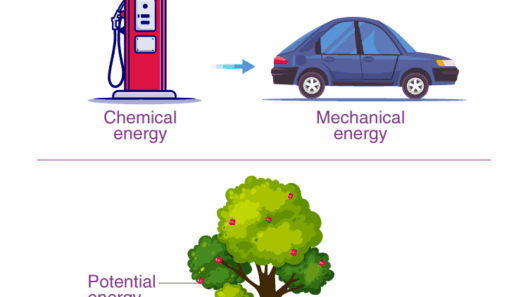In the intricate tapestry of modern living, energy plays an omnipresent role, weaving together the fabric of our daily activities. Yet, like a double-edged sword, the consumption of electricity not only fuels our conveniences but also carries significant repercussions for our environment. Among the myriad components of your electricity bill lies a charge that many consumers overlook—the Energy Conservation Charge. Understanding this charge is pivotal to navigating the labyrinth of energy consumption and environmental stewardship.
The Energy Conservation Charge embodies a financial mechanism designed to encourage energy efficiency. It serves as a dedicated fund that utilities allocate towards programs aimed at reducing energy consumption across their customer base. Think of it as a seed planted in the fertile grounds of awareness and accountability. Just as a gardener nurtures each seedling to full bloom, the Energy Conservation Charge fosters a culture of sustainability within the community.
First and foremost, it’s essential to comprehend the roots of the Energy Conservation Charge. Utilities impose this charge as part of their obligation to meet regulatory requirements, often as dictated by state legislation or energy commissions. The genesis of such regulations lies in the pressing need to mitigate environmental challenges exacerbated by excessive energy use. This charge serves as a reminder that individual choices ripple through the broader ecological system, akin to pebbles dropped into a still pond, sending concentric rings across the surface.
Understanding the specifics of the Energy Conservation Charge requires familiarity with the mechanics of your electricity bill. Typically, this charge appears alongside other line items, often appearing as a small but significant percentage of your total billing amount. While each utility may calculate this charge differently, its underlying purpose remains constant: to incentivize conservation and promote energy-efficient technologies. By making a conscious effort to support this initiative, consumers embody the essence of a responsible steward of natural resources.
Consider this: every dollar directed towards the Energy Conservation Charge is akin to a pledge made towards a more sustainable future. These funds are frequently funneled into programs that support energy audits, subsidies for energy-efficient appliances, and educational outreach initiatives designed to empower consumers. The cumulative effect of collective financial commitment can yield substantial environmental benefits—much like the way individual raindrops converge to form a mighty river.
With a better understanding of the charge, one must also explore its implications for consumers. By participating in energy conservation programs funded by this charge, individuals are not only contributing to community sustainability but are often rewarded with tangible benefits. Rebates on high-efficiency appliances, energy-saving retrofits for homes, and even educational tools designed to foster wise energy consumption can all stem from this pooled resource. In essence, the Energy Conservation Charge can be viewed as an investment in a dual-purpose framework: nurturing the planet while yielding financial savings.
Furthermore, the societal value of the Energy Conservation Charge cannot be overstated. By fostering a paradigm of efficiency, this charge cultivates a culture wherein energy conservation becomes integral to our lifestyle choices. Through community workshops and outreach, residents become more adept at recognizing wasteful habits and are educated on how to curb unnecessary consumption. The awareness generated can shift public perception, fostering an ethos where sustainability transcends mere trendiness, embedding itself firmly within community identity.
Yet, as with all structures reliant on communal engagement, challenges persist. Critics often question the efficacy of the Energy Conservation Charge, citing concerns about transparency and the allocation of funds. The juxtaposition of enthusiasm for conservation against skepticism highlights the need for consumer education and active participation. Addressing these concerns is paramount; consumers should demand clarity on how their contributions are utilized, pressing for accountability in program outcomes. Just as a bird must nurture its wings to ascend, so too must consumers advocate for the careful stewardship of their resources.
In addition, the Energy Conservation Charge varies across different regions, signaling a robust conversation about local energy policies. Variability introduces an additional layer of intrigue and complexity into the discourse, as some regions might offer more compelling conservation programs than others. This situation speaks to the geographical disparities in energy resource management and the differing levels of governmental commitment to sustainable practices. Localization of energy conservation strategies underscores the importance of community mobilization and the power of collective action.
Ultimately, the Energy Conservation Charge is far more than a mere line item on your bill; it represents a pathway towards a sustainable future. By understanding its nuances, consumers can become agents of change—transforming bills into actionable commitments towards environmental preservation. Harnessing this charge is like wielding a brush, allowing individuals to paint their dedication to sustainability in vivid strokes across the canvas of society.
As we tread lightly upon this earth, conscious of our energy use, let us recognize the significance of the Energy Conservation Charge. It invites us to reflect on our habits, encourages responsible consumption, and embodies the promise of a cooperative effort towards a more sustainable world. In doing so, we illuminate a path forward, forging a legacy of mindfulness and stewardship for generations yet unborn.








